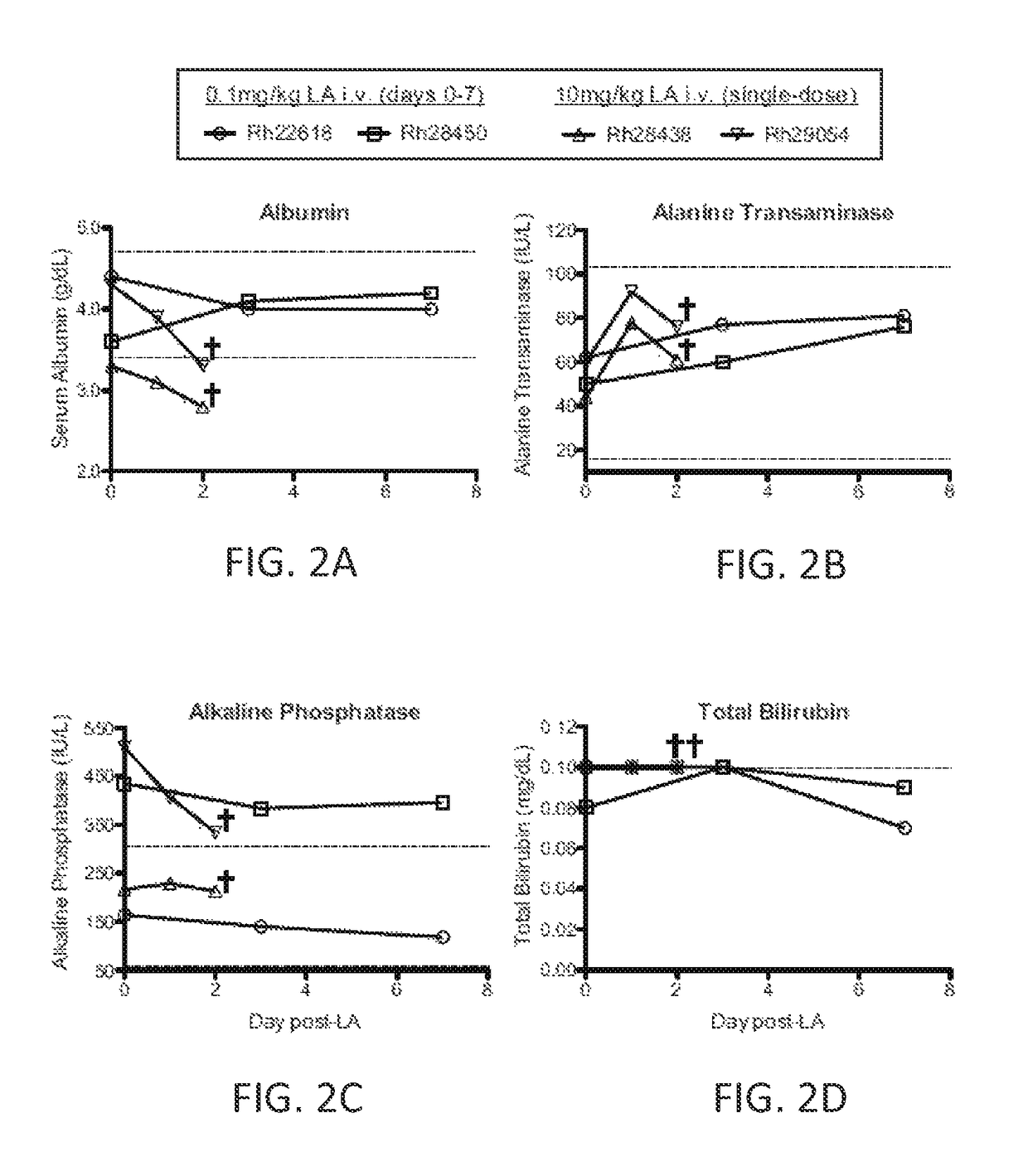Use of bisphosphonates as HIV/AIDS adjunctive treatment
a technology of bisphosphonates and hiv/aids, applied in the direction of immunological disorders, drug compositions, microcapsules, etc., can solve the problems of confusion and forgetfulness, headaches, and hiv patients often die of opportunistic infections, so as to prevent or delay the rebound of hiv viral loads, improve ti safety, and target specific effects
- Summary
- Abstract
- Description
- Claims
- Application Information
AI Technical Summary
Benefits of technology
Problems solved by technology
Method used
Image
Examples
example 1
Alendrondate Preparation
[0070]A one liter batch of liposomal alendronate encapsulated in liposomes containing cholesterol, DSPC and DSPG, and dispersed in phosphate buffer saline solution was produced. Liposomal alendronate may be provided in two concentrations, for clinical convenience: 5 mg / ml and 0.5 mg / ml, as a sterile whitish, liposomal dispersion. These concentrations may be further formulated to obtain a desired amount of therapeutic agent in any specific volume. The lipid ingredients were composed of cholesterol, DSPC and DSPG. The dispersion also contained a phosphate buffer saline solution for pH control, infusion suitability and for the maintenance of isotonicity. At least 96% of the drug in the final product was encapsulated in the liposomes. For administration, the content of the vial (or part of it, as needed) was diluted with a saline vehicle, and then administered as an infusion. In one specific pre-clinical Example, the appropriate mass of LA (determined by body wei...
example 2
[0094]Liposomal Alendronate Depleted Monocytes in Nonhuman Primates.
[0095]The ability of LA to deplete monocytes was tested in cynomolgus macaques. Specifically, two cynomolgus macaques were treated with a single 0.1 mg / kg i.v. dose of LA (LA 1 and LA 2). The absolute and relative frequencies of CD14+ monocytes in whole blood were then assessed through 7 days post injection (d.p.i.) by flow cytometry. The results are presented in FIGS. 1A-1B. Cynomolgus macaques receiving 0.1 mg / kg of LA i.v. showed a ˜50% reduction in CD14+ monocyte frequency by 1 d.p.i. As shown in FIGS. 1A-1B, this depletion was transient, however, as CD14+ monocyte frequencies returned to baseline levels by 2 d.p.i. Thus, LA was shown to be effective for monocyte depletion in nonhuman primates.
[0096]Blood Processing.
[0097]Whole blood was collected into EDTA treated tubes (BD Biosciences, San Jose, Calif.). A 500 μl aliquot was used to assess complete blood counts (CBC) using a Horiba / ABX Pentra 60C+ (Horiba, Irv...
example 3
[0102]Liposomal Alendronate is Well-Tolerated in Nonhuman Primates.
[0103]The safety of LA treatment was examined in the nonhuman primate model. Serum concentrations of four key readouts of liver function (albumin, alanine transaminase, alkaline phosphatase, and bilirubin) were monitored in four rhesus macaques, each receiving one of two different LA-treatment regimens. FIGS. 2A-2D illustrate serum chemistry analysis of rhesus macaques receiving a repeated low-dose (0.1 mg / kg i.v. each day for one week; Rh22618 and Rh28450) or a single high-dose (10 mg / kg i.v.; Rh28438 and Rh29054) of LA. Dotted lines represent the expected ranges of albumin, alanine transaminase, alkaline phosphatase, and total bilirubin serum concentrations based on rhesus macaque population statistics at the Oregon National Primate Research Center. Serum chemistry of the animals receiving the repeated low dose injections of LA was sampled on days 0, 3 and 7. Serum chemistry of the animals receiving the single high...
PUM
| Property | Measurement | Unit |
|---|---|---|
| particle size | aaaaa | aaaaa |
| pressure | aaaaa | aaaaa |
| pressure | aaaaa | aaaaa |
Abstract
Description
Claims
Application Information
 Login to View More
Login to View More - R&D
- Intellectual Property
- Life Sciences
- Materials
- Tech Scout
- Unparalleled Data Quality
- Higher Quality Content
- 60% Fewer Hallucinations
Browse by: Latest US Patents, China's latest patents, Technical Efficacy Thesaurus, Application Domain, Technology Topic, Popular Technical Reports.
© 2025 PatSnap. All rights reserved.Legal|Privacy policy|Modern Slavery Act Transparency Statement|Sitemap|About US| Contact US: help@patsnap.com



